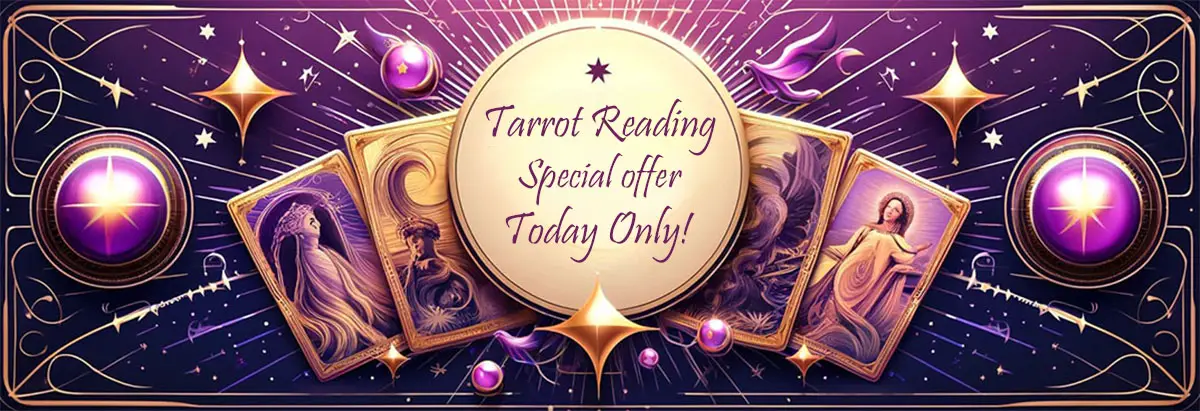The Enigmatic Dream of Hermia: Unveiling the Meaning Behind the Snake Symbol
Dreams have long captivated the human imagination, often leaving us in awe and perplexity as we try to unravel their hidden meanings. In Shakespeare’s enchanting play “A Midsummer Night’s Dream,” the character Hermia finds herself immersed in a vivid dream featuring a mysterious snake. This intriguing symbol holds significant symbolic significance, reflecting deep-seated emotions and desires within her subconscious mind. Throughout this article, we will embark on a journey of exploration to understand why Hermia uses a snake in her dream and what implications it may hold for her personal journey. Delving into the rich symbolism of dreams and drawing from psychological perspectives, we will attempt to shed light on the enigmatic nature of Hermia’s snake dream and its profound implications for her character and growth. So, let us venture forth into the realm of dreams and unravel the secrets that lie within.
The Symbolic Significance of Dreams

Dreams hold a profound and symbolic significance in the realm of human experience. They provide a glimpse into the mysterious workings of our subconscious minds, revealing hidden desires, fears, and emotions. Throughout history, dreams have been regarded as portals to another realm, where the conscious and unconscious merge. The symbolism embedded within dreams allows us to tap into a deeper level of understanding and interpretation. As we explore the symbolic significance of dreams, we begin to unravel the intricate tapestry of our innermost thoughts and feelings. Whether it be the exploration of archetypal symbols, such as the snake, or the manifestation of personal experiences, dreams offer valuable insights into our psyche. By deciphering these hidden messages, we can gain a deeper understanding of ourselves and navigate the complexities of our waking lives.
1. Dreams as Reflections of the Subconscious Mind
Dreams serve as a window into the mysterious realm of the subconscious mind. They provide a direct channel for our deepest thoughts, emotions, and desires to manifest themselves in symbolic form. Our subconscious mind operates outside the boundaries of logic and rationality, allowing dreams to tap into hidden layers of our psyche. By analyzing dream imagery, we can gain insights into unresolved conflicts, unexpressed emotions, and repressed desires. Dreams often serve as a reflection of our innermost selves, offering a glimpse into our fears, anxieties, and aspirations. Exploring the intricate web of symbols that populate our dreams can unlock a greater understanding of who we truly are. Through this introspection, we can navigate our waking lives with increased self-awareness and make sense of the complexities that shape our existence.
2. Symbolism in Dreams
Symbolism plays a significant role in dreams, serving as a language of the subconscious. Through symbolic imagery, dreams communicate complex emotions, desires, and fears that may be difficult to express consciously. Symbols can take various forms, such as animals, objects, or even certain actions. Each symbol carries its own unique meaning, often influenced by cultural, personal, and psychological factors. For example, the snake has been a potent symbol in many cultures, representing transformation, wisdom, temptation, or even danger. The interpretation of symbolism in dreams requires a nuanced understanding of the individual’s experiences, beliefs, and cultural background, as well as an exploration of collective symbolism. By analyzing the symbolism present in dreams, we gain valuable insights into our inner landscape, helping us navigate the mysteries and complexities of our own psyche.
Hermia’s Dream: Context and Analysis

Hermia’s dream, as depicted in Shakespeare’s “A Midsummer Night’s Dream,” serves as a pivotal moment in the character’s journey. This dream holds a multitude of layers and complexities, offering a glimpse into the challenges and desires plaguing Hermia’s subconscious mind. By analyzing the context surrounding Hermia’s character and the specific symbolism of the snake, we can unravel the deeper meaning behind her dream. The snake, often associated with both positive and negative connotations, adds an element of intrigue and mystery to Hermia’s narrative. Through careful analysis, we can begin to understand the implications of this dream and its significance in shaping Hermia’s path. Whether it represents resilience and transformation, or temptation and forbidden desires, Hermia’s dream holds a key to unlocking her innermost self.
1. Exploring Hermia’s Character and Challenges
To truly understand the significance of Hermia’s snake dream, it is essential to delve into her character and the challenges she faces. Hermia, a young woman with a rebellious spirit, finds herself caught in a complex web of love and societal expectations. She defies her father’s wishes by refusing to marry Demetrius, the man he has chosen for her, and instead follows her heart, loving Lysander. This defiance exposes her to the consequences of going against societal norms and the wrath of her father. Hermia’s dream serves as a reflection of her internal struggles and the turmoil she experiences in making her own choices. It embodies the conflicts she faces between the desire for personal freedom and the pressure to conform. By exploring Hermia’s character and challenges, we can better comprehend the symbolic motifs in her dream and their connection to her inner world. (Source: whatdoeslife.com)
2. Understanding the Snake Symbol
The snake symbol holds a complex and multifaceted meaning in dreams, often representing different aspects depending on cultural, personal, and psychological contexts. In many cultures, the snake is seen as a powerful and symbolic creature, embodying both positive and negative qualities. In the context of dreams, the snake often represents transformation, rebirth, and renewal. It can signify the need for change or shedding of old patterns and beliefs. Additionally, the snake can be associated with wisdom, knowledge, and healing. However, the snake symbol can also have negative connotations, representing temptation, danger, or hidden fears. It can be seen as a manifestation of suppressed desires or forbidden aspects of the self. Understanding the specific meaning of the snake in Hermia’s dream requires considering her personal experiences, cultural influences, and the context of the play. By delving deeper into the symbolic significance of the snake, we can gain insight into the underlying themes and messages of Hermia’s dream.
(Source: /what-is-the-meaning-of-snake-dream-in-islam/)
Interpretations of Hermia’s Snake Dream

Hermia’s snake dream holds multiple layers of interpretation, each shedding light on different aspects of her inner world. One possible interpretation is that the snake symbolizes resilience and transformation. Just as a snake sheds its skin, Hermia may be going through a period of growth and personal transformation. The presence of the snake in her dream could be a sign of her resilience and ability to adapt to challenging situations. Another interpretation revolves around the concept of temptation and forbidden desires. The snake, often associated with temptation in various cultural and mythological contexts, may represent Hermia’s subconscious desires that go against societal norms or expectations. It could be a reflection of her inner conflicts and the allure of embracing her forbidden desires. Additionally, Hermia’s dream could symbolize her journey towards reclaiming power and assertiveness. Snakes are often seen as powerful and assertive creatures, and by appearing in her dream, the snake could be a manifestation of Hermia’s longing to assert herself, break free from societal constraints, and take control of her own destiny. These interpretations offer glimpses into the complex web of emotions and desires that play a role in shaping Hermia’s character and her journey throughout the play. To explore further interpretations of snake dreams, including the meaning of seeing two snakes in a dream, click here.
1. Resilience and Transformation
Resilience and transformation are key themes that emerge when interpreting Hermia’s snake dream. The presence of a snake in her dream symbolizes her ability to adapt and overcome challenges. Just as a snake sheds its skin, Hermia is being called to shed her old ways and embrace personal growth. The snake represents her inner strength and resilience to navigate difficult situations. It serves as a reminder that transformation is possible and that she has the power to metamorphose into a stronger version of herself. This interpretation emphasizes Hermia’s journey of resilience and the transformative potential that lies within her. As she confronts obstacles and embraces change, she is able to emerge as a more resilient and empowered individual.
2. Temptation and Forbidden Desires
Temptation and forbidden desires have long been interwoven within the fabric of human existence, and Hermia’s snake dream serves as a poignant symbol of these complex emotions. The presence of a snake in her dream may signify her inner yearnings and passions that are deemed taboo or off-limits. Just as the serpent in the Garden of Eden tempted Adam and Eve with the forbidden fruit, the snake in Hermia’s dream represents her own temptations and desires that may be perceived as improper or outside societal norms. It beckons her to explore the exhilarating yet risky territory of following her heart’s desires, even if it means defying convention or facing consequences. This snake dream serves as a reminder that within each of us lie hidden desires that may challenge the boundaries of what is considered acceptable. It urges us to confront our own suppressed passions and consider the potential consequences of succumbing to temptation. Through this symbology, Hermia’s dream offers a glimpse into the universal struggle between staying within the confines of societal expectations and venturing into the realm of the forbidden.
3. Reclaiming Power and Assertiveness
Within the context of Hermia’s snake dream, the symbol also holds significance in terms of power and assertiveness. Snakes are often associated with qualities such as cunningness, strength, and transformation. In Hermia’s dream, the presence of the snake may be a reflection of her subconscious desire to reclaim her power and assertiveness in challenging situations. It serves as a reminder for her to tap into her innate strength and embrace her true potential. The snake symbolizes her ability to shed old beliefs and experiences, allowing her to transform into a more empowered version of herself. This interpretation suggests that Hermia’s dream is urging her to confront obstacles with confidence, seize opportunities, and assert her needs and desires. By embracing the symbolism of the snake, Hermia can tap into her inner power and navigate her journey with newfound strength.
Psychological Perspectives on Snake Dreams

Snake dreams have fascinated psychologists and dream analysts alike, as they offer a unique window into the human psyche. From a psychological perspective, the interpretation of snake dreams can vary depending on the theories and frameworks used. One prominent figure in dream analysis is Sigmund Freud, who believed that dreams were manifestations of repressed desires and unconscious conflicts. According to Freud, a snake in a dream may symbolize sexual energy or hidden desires. On the other hand, Carl Jung, a renowned psychologist, approached dream analysis from the perspective of the collective unconscious. Jung viewed snakes as archetypal symbols representing transformation, wisdom, and the integration of opposites. These divergent perspectives highlight the complexity of snake dreams and provide insight into the deeper layers of the human mind. While interpretations may differ, one thing remains clear: snake dreams offer a glimpse into the intricate workings of our subconscious and invite us to explore the depths of our own psyche.
1. Freudian Interpretation
Sigmund Freud, the renowned psychoanalyst, delved into the interpretation of dreams from a Freudian perspective. According to Freud, dreams are a manifestation of repressed desires and conflicts within the unconscious mind. In the case of Hermia’s snake dream, a Freudian interpretation might suggest that the snake symbolizes her suppressed sexual desires or erotic fantasies. Freud believed that snakes often represented phallic symbols, representing male sexual energy and potency. The presence of the snake in Hermia’s dream could signify her subconscious yearning for forbidden or taboo desires. Freudian analysis also suggests that dreams act as a form of wish fulfillment, allowing individuals to experience their unfulfilled desires within the realm of dreams. Through exploring the Freudian interpretation of Hermia’s snake dream, we gain insights into the hidden depths of her subconscious and the suppressed desires that shape her waking life.
2. Carl Jung’s Analytical Psychology
Carl Jung’s analytical psychology offers a rich perspective on the interpretation of dreams, including the symbolic meaning of snakes. According to Jung, dreams are not mere random occurrences but rather a reflection of the collective unconscious and archetypal patterns. Snakes are seen as powerful archetypal symbols representing transformation, wisdom, and the potential for spiritual growth. Jung believed that the snake in dreams often represents the process of individuation, where individuals integrate their unconscious aspects to become whole. The snake’s association with shedding its skin and renewing itself aligns with the concept of personal growth and transformation. Jung also explored the idea that snakes can symbolize the emergence of repressed aspects of the self or powerful sexual and instinctual energies. In the realm of analytical psychology, Hermia’s snake dream may signify her journey of self-discovery and transformation as she navigates her challenges and desires.
Implications for Hermia’s Journey
The snake dream experienced by Hermia in “A Midsummer Night’s Dream” carries profound implications for her personal journey. It becomes a catalyst for self-discovery and personal growth. The dream serves as a metaphorical guide, urging Hermia to embrace change and overcome obstacles in her life. By encountering the snake in her dream, Hermia is confronted with her own resilience and ability to transform. It represents her inner strength and adaptability, urging her to rise above challenges and embrace the unknown. Additionally, the snake symbol may hint at Hermia’s temptation and forbidden desires, encouraging her to explore her hidden desires and confront societal expectations. The dream signifies a reclamation of power and assertiveness for Hermia. It serves as a reminder for her to assert her own voice and make choices that align with her own desires, rather than succumbing to external pressures. Ultimately, the snake dream holds a transformative message for Hermia, guiding her on a path of personal growth, self-discovery, and empowerment.
1. Personal Growth and Self-Discovery
Personal growth and self-discovery are central themes that emerge from Hermia’s snake dream. The presence of the snake symbol can represent the shedding of old skin and embracing transformation. Just as a snake sloughs off its old skin to reveal a renewed self, Hermia’s dream signifies her journey towards personal growth and self-discovery. The encounter with the snake in her dream prompts her to confront her fears and limitations, pushing her towards embracing change and exploring new horizons. This transformative experience encourages her to examine her own desires, values, and aspirations, leading to a deeper understanding of her true self. Through this process, Hermia gains insight into her own strengths and weaknesses, paving the way for personal growth and self-actualization. As she navigates the challenges and obstacles in her waking life, the lessons learned from her snake dream serve as a guiding light on her path of self-discovery and fulfillment.
2. Overcoming Obstacles and Embracing Change
Overcoming obstacles and embracing change are central themes in Hermia’s journey, as reflected in her snake dream. The symbol of the snake can signify the need for transformation and adaptability in the face of challenges. Just as the snake sheds its old skin to grow and thrive, Hermia is called upon to confront her own obstacles and evolve. The dream serves as a reminder that growth and progress often require us to step out of our comfort zones and embrace the unknown. By facing her fears and embracing change, Hermia can discover new strengths within herself and find the resilience needed to navigate the twists and turns of life’s journey. Embracing change, much like the shedding of the snake’s skin, allows Hermia to shed outdated beliefs and limitations, paving the way for personal growth and a renewed sense of empowerment.
Conclusion
In conclusion, Hermia’s snake dream holds a multitude of symbolic meanings. It represents resilience and transformation, as Hermia faces challenges and undergoes personal growth. The snake also symbolizes temptation and forbidden desires, tempting Hermia to explore her own suppressed emotions and desires. Additionally, the snake serves as a representation of reclaiming power and assertiveness, urging Hermia to assert herself in the face of adversity. From a psychological perspective, Freudian interpretation suggests that the snake signifies sexual instincts and repressed desires, while Carl Jung’s analytical psychology views it as a symbol of transformation and rebirth. Ultimately, Hermia’s dream reflects her journey of self-discovery, personal growth, and embracing change. It reminds us that dreams hold a significant place in understanding ourselves and can guide us towards a more fulfilling existence. So, let us continue to explore the labyrinth of dreams, for within them lie the keys to unlocking the depths of our souls.
Frequently Asked Questions
1. Can dreams predict the future?
While dreams can sometimes symbolically reflect aspects of our lives, there is no scientific evidence to suggest that they can predict the future with certainty. Dreams are primarily a reflection of our subconscious mind and are influenced by our experiences, thoughts, and emotions.
2. Why do we forget our dreams?
Forgetting dreams is a common occurrence. This happens due to the nature of our brain’s memory consolidation process. Dreams are often stored in our short-term memory, and if not transferred to long-term memory, they can fade quickly upon awakening.
3. Do dreams have any meaning?
While dreams can hold personal meaning and symbolism, their interpretation is subjective. The meaning of a dream can vary depending on the individual and their unique experiences and emotions. Exploring personal associations and the context of the dream can help uncover potential meanings.
4. Can we control our dreams?
Lucid dreaming, a state where one is aware they are dreaming, allows individuals to exert some control over their dreams. Techniques such as reality checks, meditation, and dream journaling can help increase the likelihood of experiencing lucid dreams.
5. Do recurring dreams have significance?
Recurring dreams often point to unresolved emotions or situations in our lives that require attention. They may serve as a signal for personal growth or the need to address specific challenges. Exploring the patterns and symbolism within recurring dreams can provide valuable insights.
6. Can dreams reflect our fears and anxieties?
Yes, dreams can serve as a platform for manifesting and processing our fears and anxieties. These dreams may provide an opportunity to confront and explore deep-seated emotions and unresolved issues in a safe and symbolic manner.
7. What is the connection between dreams and creativity?
Dreams have long been recognized as a source of inspiration for artists, writers, and musicians. They can provide fresh ideas, vivid imagery, and novel perspectives that fuel creative endeavors. Exploring and reflecting on dream content can stimulate creativity and imagination.
8. Can analyzing dreams improve self-awareness?
Examining dreams can indeed enhance self-awareness. Interpreting dream imagery and symbolism helps individuals gain insight into their desires, fears, and emotions that may be operating beneath their conscious awareness. This increased self-awareness can contribute to personal growth and self-discovery.
9. Are there cultural variations in dream symbolism?
Absolutely. Dreams and their interpretation can vary across cultures and belief systems. Symbols that hold specific meanings in one culture may hold entirely different connotations in another. Understanding cultural context is crucial when analyzing dream symbolism.
10. Can dreams provide solutions to real-life problems?
Dreams can offer a fresh perspective on real-life problems by presenting alternative scenarios or insights that may not be immediately apparent in waking life. While dreams don’t offer direct solutions, they can stimulate creativity and generate new ideas for problem-solving.


